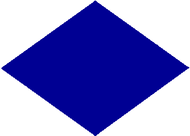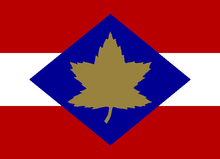This article includes a list of references, related reading, or external links, but its sources remain unclear because it lacks inline citations. (February 2012) |
| II Canadian Corps | |
|---|---|
 Formation patch worn by corps-level personnel. | |
| Active | 1943–1945 |
| Country | Canada |
| Branch | Canadian Army |
| Type | Corps |
| Size | Two Canadian infantry divisions, one Canadian armoured division, 1st Polish Armoured Division, units from other Allied countries. |
| Commanders | |
| Notable commanders | Guy Simonds |

II Canadian Corps was a corps-level formation that, along with I (British) Corps (August 1, 1944, to April 1, 1945) and I Canadian Corps (April 6, 1943, to November 1943, and April 1, 1945, until the end of hostilities), comprised the First Canadian Army in Northwest Europe during World War II.
Authorization for the formation of the corps headquarters became effective in England on January 14, 1943. Over March 4–12 the new Canadian corps was involved in Exercise Spartan, a large-scale training exercise in southern England. This exercise revealed weaknesses in the command of both the new Corps and of First Canadian Army, and this led directly to several changes in leadership over the subsequent year.
The first commander of II Canadian Corps was Lieutenant-General Ernest William Sansom, effective January 15, 1943. Concerns over his leadership abilities and health caused Sansom to be replaced by Lieutenant-General Guy Simonds on January 29, 1944. Simonds led the corps for the remainder of its existence. On May 5, 1945, at Bad Zwischenahn in Northern Germany, Simonds accepted the surrender of German forces facing II Canadian Corps at the end of the war. The corps was deactivated on June 25 as part of general demobilization.
II Canadian Corps opened its first tactical headquarters in Normandy at Amblie on June 29, 1944. The headquarters became fully operational on July 7 as the 2nd Canadian Infantry Division began to arrive in France. This first division was soon joined by the 3rd Canadian Infantry Division and the 2nd Canadian Armoured Brigade, which had participated earlier in the Normandy landings and in Operation Windsor as part of I (British) Corps. The 4th Canadian (Armoured) Division was the third Canadian division-level component of the corps. Finally, for most of the campaign through Northwest Europe the corps also included Polish 1st Armoured Division.
Although nominally a Canadian formation, II Canadian Corps contained significant contributions at different times from other Allied countries. In addition to the 1st Polish Armoured Division, the corps included the 1st Belgian Infantry Brigade, the Royal Netherlands Motorized Infantry Brigade, and the 51st (Highland) Infantry Division.